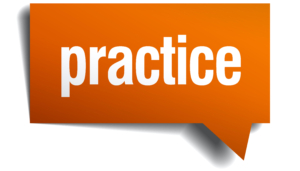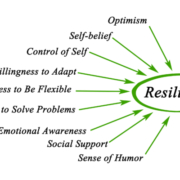How to Be More Charismatic
I’ve been enjoying podcasts for the last few years, and I’m not surprised about their rise in popularity. Personally, I think podcasts act as windows into authentic conversations. Whether you enjoy self-help, mystery, humor, news, or personal stories, every podcast offers a fascinating view into another person’s mind. I recently listened to a great podcast covering confidence and charisma — it provided practical tips and insightful research.
I’ve always believed in the importance of charisma, especially given my professional experience owning a speakers agency and working in the training/coaching industry for over 22 years. When it comes to how expert speakers are received on stage, charisma plays a key role. I’ve watched numerous leaders present their ideas and innovations over the years and their ability to quickly build rapport and trust with their audience is an art. Let’s dive deeper into this art and how charismatic leadership can be your secret weapon to higher engagement.
The power of charisma
First things first, what is the definition of charisma? According to Cambridge Dictionary, it’s “a special power that some people have naturally that makes them able to influence other people and attract their attention and admiration.” Charisma is closely tied to having strong confidence — it’s when you meet someone and you’re irresistibly drawn to them. If you have charisma, it influences people to say, “I can trust you and I can count on you.” Also, charisma is a predictor of leadership success, next to emotional intelligence (EI), cognitive ability, and integrity.
Research by Vanessa Van Edwards, Founder of Research Group, identifies charisma as the single most important part of someone being successful and it helps build confidence. She believes anybody can be charismatic with specific setup cues. Charisma is not only for the smartest person in the room — someone may have a lot of expertise, education, and knowledge on a subject, but they might struggle with conveying their message to others because they lack charisma.
It’s important to keep in mind that there can be a “dark side” to charismatic leadership. Jay Conger and Rabindra Kanungo describe it very differently in their book:
“Charismatic leaders can be prone to extreme narcissism that leads them to promote highly self-serving and grandiose aims.”
This is illustrated in a clinical study that showed when charisma overlaps with narcissism, leaders tend to abuse their power and take advantage of their followers. It’s important to not fall into the “dark side” of charismatic leadership.

Strategies to strengthen charisma
If want to learn more towards the “light side” of charismatic leadership, there are 3 things you should do in the first 10 minutes of a meeting (according to Van Edwards’ research):
- Show your hands
This is related to one’s survival mechanism. It stimulates your amygdala (a.k.a. fight or flight response) when we can’t see someone’s hands. During your next meeting, try putting one hand up or make a natural gesture with your hands. This can help deactivate a fight or flight response. - Proximate zones
In a virtual meeting your camera should be at least one foot and a half away. Remember: If you move closer to a camera space, you signal intimacy. Utilize or reserve this approach for more intimate moments. - Set the tone
Watch your tone when you introduce yourself to others. Don’t use the question inflection at the end of your introduction — the question inflection makes people doubt you.
Be aware of your verbal and nonverbal language. Up to 90% of communication is nonverbal, yet most people aren’t aware of how their body language helps them connect or disconnect with people. In a Princeton University study, it identifies that when a person under-signals warmth, people don’t believe their competence. Continue to show warmth and care towards others by practicing:
- Active listening with head tilts
When your head is tilted slightly, it can demonstrate interest and active listening. - Empathy with nods
Positive nodding is known to show feelings of empathy. A study identifies when a person gives a triple nod when listening to another person, the person speaking talks 67% longer. For example, nodding is impactful during the beginning of a sales call when you want to learn more about your client and their needs. - Words of response
These sayings and phrases all send warmth cues: “uh-huh,” “yes,” “hmmm,” “I see,” “ahh, wow!” “sending a virtual hug,” “I appreciate you.” Warm words have a positive physiological effect on people.

Continue to practice
We’ve been told that you only have one chance to make a good first impression, but you can continue to demonstrate growth with these practices:
- Be aware of inflection and tone of voice
When you introduce yourself or communicate facts, avoid using the question inflection. A study was conducted by recording doctors in a ten-second introduction of themselves saying their name, their specialty, and where they worked. They took the recordings and edited them so listeners could only hear the tone, not the words. The doctors who used an “up-tone” were rated lowest on the warmth and competence scale. This study went on to further reveal that those same doctors had the highest rate of malpractice lawsuits. An up-tone can make you appear unsure. To improve, speak as you’re breathing out and relax any tension in your vocal cords. - Face the camera
During virtual meetings, have good posture and align your body with the camera. If you use a second monitor, have the camera on top and don’t show the side angle of your face. - Make eye contact
People who look you in the eye are seen as intelligent. In meetings, get into the habit of making strong eye contact, especially when you’re emphasizing a point. - Be mindful of gestures
Natural and appropriate hand gestures illustrate what you’re saying. It helps others better understand what you’re trying to communicate and conveys confidence. For example, when you say “three,” hold up three fingers. This is true even if your camera is off or you’re working with someone who can’t see you in-person. Your message will always be clearer when you’re signaling.
Try some of these best practices and see if people perceive you differently, whether more confident and/or more charismatic. To learn more, watch Mel Robbin’s podcast covering how to be confident and use body language to boost influence.
To learn more about EI, register for the next EI Online Course or our Self-Paced Introduction to EI.

About the Author
Bobi Seredich is a recognized speaker, author, trainer, and successful entrepreneur specializing in leadership development. She has spent over 22 years of her career dedicated to creating, directing, writing, and presenting leadership programs for top companies in the U.S. and around the world.
Bobi is the founder of the Southwest Institute for Emotional Intelligence and President of EQ Inspirations. In 2001, she founded Equanimity, Inc. also known as EQ Speakers – a speakers’ bureau and leadership training company. It fast became a top speaker bureau that booked hundreds of speakers with large Fortune 500 clients. EQ Speakers was sold in 2012 and continues to be a leader in the industry.
Her book Courage Does Not Always Roar – Ordinary Women with Extraordinary Courage, was published by Simple Truths in the spring of 2010. The book is a collection of her experiences and stories of women who have had the courage to overcome very difficult life events.
Her passion is to guide individuals and organizations to a higher performance level through her own business knowledge, inspirational stories, and leadership emotional intelligence training. Bobi lives in Phoenix, AZ with her husband, Roy, and 11-year-old twins, Alex and Gia.
By Bobi Seredich












Leave a Reply
Want to join the discussion?Feel free to contribute!